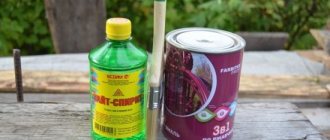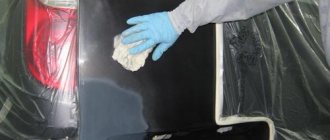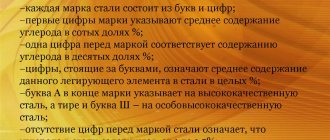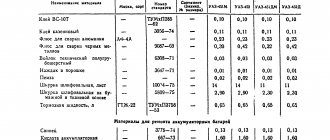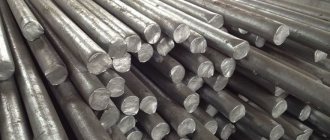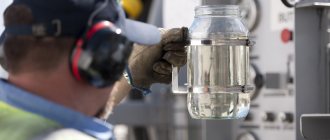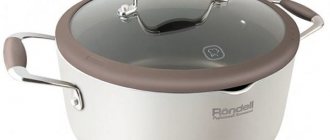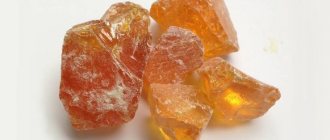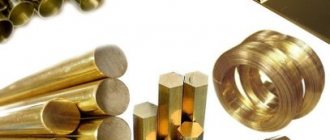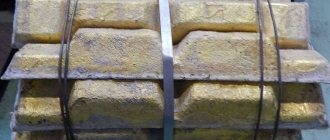Over the years, as well as now, solvents are in great demand. New species are constantly appearing. They are designed to dissolve various substances. In addition, they are used to improve performance, as well as to obtain paints and varnishes of the desired consistency.
For the production of solvents both based on one component and using many substances. Solid, liquid, and gaseous components can be used for production. Most solvents are liquid.
To evaluate solvents, attention is paid to many criteria.
Depending on the manufacturing process as well as the quality of the components, some special characteristics depend. We are talking about toxicity, acidity level, what level of chemical additives, fire hazard, etc.
Solvents have found applications in instrument making, machine manufacturing, the chemical industry, leather goods, footwear, laboratory research, and medicine.
White Spirit
Type: Solvent (chemical-resistant coatings) Chemical composition: organic Regulatory documents: GOST 3134-78
Purpose
Serves as an active solvent for alkyd, oil, some rubber and other paints and varnishes, as well as bitumen and a number of resins in accordance with the instructions for their use.
Brief description of application:
White spirit (nefras-S4-155/200) is used in the paint and varnish industry as a solvent, in the production of drying oils and other industries.
Detailed description and purpose:
White spirit is used for diluting paints and varnishes: alkyd enamels and varnishes, oil paints, resin and bitumen materials. It is a high-boiling fraction of gasoline and does not contain water-soluble acids and alkalis.
When diluting paints and varnishes, white spirit allows you to achieve the necessary quality characteristics of the coatings obtained from them.
The specific volumetric electrical resistance of white spirit is 1013 Ohm•m.
Color and appearance:
White spirit is an almost colorless (has a yellowish tint), transparent oily liquid with a characteristic odor of kerosene. There should be no visible mechanical impurities in it; the solvent has a homogeneous composition without signs of separation.
Recommendations for the use of white spirit:
White spirit is introduced into the paint material being diluted in small portions with constant stirring until the desired viscosity (consistency) is obtained.
When opening containers with white spirit, it is not allowed to use tools that produce a spark when struck. Work with white spirit should be carried out at an ambient temperature of +5 to +30°C and a relative humidity of no more than 85%.
When using white spirit, the requirements of work safety standards, fire safety rules, and industrial sanitation must be observed. It is recommended to work with it in good ventilation or in a well-ventilated area using personal protective equipment. Avoid contact with respiratory and digestive organs.
Preparation of material:
White spirit is available ready for use.
Application technology
The purchased solvent is already ready for use. The technology for its use is very simple:
- Add a small amount of solvent to the desired material.
- Mix thoroughly until smooth.
- Repeat as necessary until the desired consistency of the main consumable is obtained.
Technical characteristics of white spirit:
| Density ρ420, no more | 0,790 |
| Fractional composition: distillation start temperature, °C, not higher | 160 |
| residue in flask, %, no more | 2 |
| Flash point determined in a closed crucible, °C, not lower | 33 |
| Volatility for xylene | 3-4,5 |
| Aniline point, °C, not higher | 65 |
| Mass fraction of aromatic hydrocarbons, %, no more | 16 |
| Mass fraction of total sulfur, %, no more | 0,025 |
Container and packaging:
White spirit is produced in industrial containers, in glass or plastic bottles of various packaging. When packaging for retail trade, the use of glass bottles for food liquids is not permitted. White spirit intended for retail trade is packaged in glass bottles and vials with a capacity of 0.25-1.00 dm3 and in bottles (with a chip) with a capacity of 0.25-0.50 dm3, closed with polyethylene stoppers. Packing bottles and vials in wooden, polymer or cardboard boxes. It is allowed, by agreement with the consumer, to use other types of packaging in accordance with the regulatory and technical documentation, ensuring the safety of the product.
Storage: White spirit is stored at temperatures from minus 40°C to +30°C.
Warranty period of storage:
The guaranteed shelf life of white spirit is 36 months from the date of manufacture.
Source: akselor.ru
Storage Features
The mixture of volatile organic substances is stored in the original packaging or hermetically sealed container, away from open sources of fire. Outdoor storage is not allowed to avoid contact of active components with a humid environment or direct sunlight.
The temperature range of storage conditions can vary within -40/+40 degrees .
The shelf life stated by the manufacturer is 12 months from the date of manufacture of the product. Provided that storage recommendations are followed.
White spirit - all technical characteristics and areas of application of the solvent
White spirit is a product obtained from the distillation of petroleum and the corresponding purification of the resulting substance, better known as a solvent. But this is not the only area of its application. To have a more complete understanding of white spirit, it is advisable to familiarize yourself with its features.
What does it represent? Somewhat oily, colorless (sometimes with a yellowish tint) liquid. The feedstock is a mixture of hydrocarbon compounds.
Main characteristics
There is no point in considering them all in detail, especially since not every one of us is familiar with the special terminology (and the meaning of individual parameters for everyday use).
All data is indicative, since there is no exact (standard) chemical composition. Solvents from different manufacturers may differ in both individual ingredients and their proportions. General requirements for the finished product are reflected in GOST No. 3134 of 1978.
Temperature (minimum, ºС):
- ignition – 33;
- boiling – 1,600.
Volatility degree (xylene) – 4.
Density (g/cm³) at room temperature – 0.76.
Toxicity level is low.
The optimal consumption (per 1 m²) is in the range from 100 to 145 g.
Container – glass or plastic.
It makes no sense to use white spirit (as well as to purchase it) made more than 3 years ago, since during this time it loses almost all of its properties, regardless of storage conditions.
Scope of application
On an industrial scale - for the production of:
- antiseptics;
- paints, varnishes:
- drying oils;
- priming agents;
- various mastics, pastes (grinding, for example).
At home
- For preliminary preparation of the base - degreasing.
- For diluting paint and varnish compositions of thick consistency.
- For cleaning materials from deposits. For example, white spirit is popular among numismatists, who use it to “reanimate” old coins, giving them their original appearance.
Safety precautions
There are no special requirements, just some recommendations.
- Work - in skin protection products.
- If the substance is used in a closed space, then in addition - a respirator + effective ventilation (ventilation).
- Storing the solvent away from heat sources (especially open fire).
- In case of fire, water must not be used to extinguish.
Price
Depends on the manufacturer, so this is just an example (in rubles/l):
- imported white spirit – from 265;
- domestic – from 105.
Note! The main difference between foreign-made white spirit is the absence of a specific, rather pungent odor. How relevant this is when used in certain conditions is up to you, dear reader, to decide. For example, is it worth overpaying just for the brand if the work is carried out outdoors? It should also be taken into account that some domestic varieties of white spirit, made using modern technologies, are also practically odorless. You just need to look for the appropriate products.
Source: masterim.guru
Advantages and disadvantages
The positive characteristics of solvent 646 can be expressed as follows:
- Availability. The product is sold in any hardware store and attracts attention at an affordable price.
- Practicality. The operating instructions are indicated on the product packaging, so anyone can easily understand the features of the application.
- Functionality. Thanks to its multicomponent composition, the solvent can interact with almost any material.
In addition, adding the product speeds up the drying of the coating and promotes the formation of a smooth, glossy surface.
The material also has significant disadvantages. In particular:
- Increased level of toxicity.
- Fire hazard.
- Strong smell.
- Special storage conditions.
Therefore, when working with a chemical solution, safety precautions must be observed.
What is a solvent
For the production of solvents both based on one component and using many substances. Solid, liquid, and gaseous components can be used for production. Most solvents are liquid.
To evaluate solvents, attention is paid to many criteria.
Depending on the manufacturing process as well as the quality of the components, some special characteristics depend. We are talking about toxicity, acidity level, what level of chemical additives, fire hazard, etc.
Solvents have found applications in instrument making, machine manufacturing, the chemical industry, leather goods, footwear, laboratory research, and medicine.
What is the difference between solvents 646 and 647?
Solvents are presented in stores in a fairly diverse assortment, but the most popular are numbers 646 and 647. At first glance, the compositions seem identical: they are produced by domestic enterprises, packaged in similar containers, and used in the same areas. However, there are minor but very important differences between the products.
A distinctive feature is the chemical composition of the solvents. We cited the components that make up 646 above, so we’ll talk about 647. This is also a multicomponent mixture, which includes the following substances:
- Ethyl acetate.
- Butanol
- Toulol.
- Butyl acetate.
As you probably noticed, the list of active ingredients does not include acetone. Thanks to this feature, solvent 647 is less active, so it can be used on surfaces that require careful care. The difference in chemical composition also affected the area of application. In particular, 647 is intended to increase the viscosity of nitrocellulose compounds.
Characteristics of solvent P646
For many decades they have been used to dilute paint and varnish products. At the moment, these thinning compositions have found their use not only for diluting paintwork materials, but also for cleaning tools, removing stains, degreasing and much more.
The most popular is multicomponent solvent 646. P646 is produced. This substance is produced using substances such as toluene, ethanol, as well as acetone and some other components. Solvent 646 is used at almost all stages of finishing work, the consumption depends on what kind of work needs to be done.
Its main advantages are that it has unique properties in terms of physical and chemical indicators. With its help, you can save a lot on the solvent consumption rate of 646 per 1 m2.
Types of Solvent Products
Now let's talk about the characteristics of the main solvents.
For oil paints and varnishes
- Gasoline . It is considered the simplest and most common solvent that can be used for this group of products. Gasoline is used as a solvent for oil paints and alkyd enamels, as well as varnishes and putties. Less commonly, it is used to dilute pentaphthalic enamels.
- Turpentine . It is used as a solvent for oil and alkyd styrene enamels and paints. Used to prepare a variety of varnishes based on copal, rosin, and dammar.
- White Spirit . This solvent is used to dilute most well-known paints, varnishes and other products (for example, it is an excellent thinner for PF-115 enamel). It is also used for diluting primer or drying oil, bitumen material, putty, and washing hands after using paints and enamels. Also used for degreasing surfaces.
For glyphthalic dyes and bitumen varnishes
- Solvent is a mixture that consists of aromatic carbohydrates, which contain a certain content of naphthenes, as well as paraffins and other cyclic carbohydrates. Solvent is used as a substance for dissolving oils and bitumen, most types of rubbers and oligomers. It is used as a means for diluting polyesteramides and other paints and varnishes that may contain small amounts of melamine alkyd substances.
- Xylene . Used for dissolving electrical insulating paints, varnishes and most enamels, silicone varnishes, as well as epoxy resins. There is one caveat here: it is a fire and explosion hazard.
Solvents for perchlorovinyl coatings
- Acetone. It is used as a solvent for natural resins and oils, diacetate and other substances such as cellulose and polystyrene, epoxy resin and copolymer, chlorinated rubber and so on. Suitable for use with enamel NTs 132, brand XB, etc.
- Acetone is contained in other mixed solvents, which are referred to as P-4 and P-4 A, as well as 646-468 and P5 (A). These are number abbreviations for solvents that are indexed this way. They are produced both for dissolving paints and for other household needs (suitable for dissolving metallic paint bases).
- Solvent 646. This is a very effective and useful chemical product. Helps to dilute nitro enamels, nitro varnishes and epoxy compounds, and other paints and varnishes.
Alcohol compositions
- Ethanol . Very toxic, this solvent for acrylic paints is used in decoration for diluting pigments, degreasing surfaces, etc.
- Methyl and butyl alcohol . Similar in composition to ethanol, but more toxic, they are used to dilute nitrocellulose-based paints and varnishes.
- Ethylene glycol . It mixes well with water and evaporates for quite a long time, which makes it possible to significantly slow down the polymerization of nitro varnishes.
What are the consumption rates for 1 sq.m2
When you want to use it, you need to know exactly what varnishes and paints it can be used with, and how much you need to add.
It is important to understand that the consumption when degreasing surfaces, as well as diluting varnishes and paints, differs significantly. Moreover, the solvent consumption will not be the same when diluting different types of varnishes and paints. To determine the optimal consumption per m2, you need to take into account the technical conditions, as well as the standards of paints and varnishes. Experimental studies are being carried out. The general degree of dilution of paintwork materials determines the solvent consumption rates for a particular substance.
In order to properly dilute nitrocellulose putty NTs-00-7, according to state standards, you will need to use 1.23 kg/t of solvent. To dilute nitroglyphthalic enamels NTs-132 and NTs-1200, you will need 1.17 and 0.85 kg/t, respectively.
Since solvent 646 is one of the most effective when compared with other multicomponent substances, it is in high demand in the construction of special-purpose facilities, as well as in the repair and maintenance of complex equipment.
HV-784 varnish and EP-00-10 putty are used for industrial purposes, as well as to ensure reliable protection of the internal surfaces of tanks and pipelines. They are highly effective, but can only be used if diluted with solvent 646. For such substances, 0.086 kg/m2 should be used.
If equipment or mechanisms are used in unfavorable atmospheric conditions, constant contact with oil products or salt water, they must be painted with NTs-11 enamel. In order to dilute it, solvent 646 is also suitable. It will require 0.528 kg per square meter.
The outer surfaces of metal mechanisms, which are also used in conditions of adverse atmospheric influences, constant contact with salt water or petroleum products, must be coated with NTs-1200 enamel diluted with solvent 646. It will require 0.147 kg per square meter.
When using NC-25 enamel, which is intended for painting indoor wood and metal surfaces, it must also be diluted with this solvent. For such purposes, the P-646 norm is 0.120 kg per square meter.
To protect the surface of concrete structures from the negative effects of aggressive substances such as acids and alkalis with a pH level of 6.0 - 10.0, it is necessary to use EP-00-10 putty. But it will protect effectively only if you use solvent 646 in an amount of 1.2 kg/m2.
In order to create effective protection for the interior of equipment such as pipelines, oil settling tanks and cooling towers, EP-5116 Enamel is used. It is suitable for the protective purpose of steel and concrete structures from atmospheric influences, moisture, as well as aggressive substances such as alkalis, solutions of phosphoric and nitric acids, saline solutions, etc. Solvent 646 is perfect for diluting enamel. It will require 0.169 kg per square meter.
You can buy high-quality solvent from our company that fully complies with the requirements of state standards. The price of the product is more than affordable.
Source: www.uzli.info
Manufacturers
To purchase quality products, you need to take a responsible approach to choosing a manufacturer. If we talk about companies specializing in the production of solvent 646, we recommend paying attention to the products of such enterprises:
- Dmitrievsky chemical plant . This is one of the oldest and dynamically developing companies that produces products for the food, paint and varnish, leather and rubber industries. The company's products are widely known not only in Russia, but also in 70 countries around the world .
- Verkhnevolzhskaya paint and varnish company . One of the largest suppliers of paints and varnishes to countries near and far abroad. The product range includes primers, paints, enamels and solvents.
- "POLICOM" . It is a leading manufacturer of industrial and household chemicals. The production line is fully automated, the products meet international requirements.
All companies pay increased attention to product quality and work in accordance with GOST .
What is white spirit solvent?
White spirit solvent is a petroleum product that is extracted as a result of distillation and purification of oil. This substance, obtained from the synthesis of synthetic carbons during oil refining, is widely used in every branch of construction work. This name white-spirit was taken from the English words White and Spirit. White means white and colorless color and spirit means spirit. In the construction world, this solvent is usually called white spirit as nefras C4-155/200. A simpler name is “Stoddard” solvent from the English. phrases Stoddard solvent.
First of all, this substance (white-spirit) is used in the field of paints and varnishes for stirring and diluting all kinds of varnish and oil paints, including alkyd. This procedure allows you to reduce the cost of varnishing materials without compromising quality. White-spirit also performs a secondary task - it perfectly dissolves vegetable oils and fats. In general, it performs the function of degreasing. This solvent is also used for cleaning engines.
As for the smell, white spirit has a sharp smell, something like kerosene. It can be felt already at a distance of several meters. White spirit vapors are extremely toxic, which is why they can cause a high degree of intoxication in humans. Therefore, when starting to work with such things, always wear a respirator and other protective clothing.
Buying white-spirit these days is not difficult. In the modern market you can find both foreign and domestic brands. As for pricing policy, it’s up to everyone to decide what is more important – smell or money.
Tips and recommendations for use
Degreasers should be used with extreme caution, avoiding contact of the liquid with the skin. All work is carried out in the given sequence:
- The metal is cleaned before processing mainly mechanically. This must be done to eliminate various defects and rust. You can use regular sandpaper, as well as a grinder;
- areas that do not need to be treated are covered with special cloths;
- It is best to apply the degreaser to the processed fragment with a piece of cloth;
- the solvent is kept on the surface for a certain period of time, after which the excess is removed, and the metal area is primed and then painted.
Attention: If dirt cannot be removed with a rag, then small items should be placed in a container filled with solvent.
It is imperative to use a degreaser before painting. One should not make the mistake of many who decide to save time by skipping this important stage of metal processing. Rust that appears on the surface over time will force the owner to incur significant time and financial costs again.
Characteristics of white spirit
As was written earlier, white spirit is a transparent-viscous substance that resembles motor oil with a specific odor. Modern European technologies allow us to avoid the imperfections of solvents. We would like to give you an average table of indicators for high-quality white-spirit? By which you can easily determine in the future whether the solvent is of high quality:
- 3.5-5 - volatility level;
- 32°C is the minimum temperature for a fire to occur;
- 0.69 g/cm. cube - density of the substance at a temperature of 20 degrees;
- 1590°C is the average temperature for the solvent to start boiling;
- 110-160 g/m2 - recommended consumption.
The solvent is produced in containers from 0.30 l to 1.0 l. Each batch of products is packaged in boxes made of polymer and wood material.
Consumption
Each of the solvents used in the work will require a certain ratio of ratio with paints and varnishes when painting. In this case, most often it is not the solvent consumption per 1 kg of paint that is indicated, but the percentage or amount of material per square meter .
For example, 110-160 g/m² is the recommended consumption for white spirit if you use it for oil paints. And PF 115 enamel will need to be diluted with solvent, white spirit, turpentine or a mixture of them in a ratio of 1: 1. To avoid severe disappointment when dissolving the paint, it is best to familiarize yourself with the features of this process in the instructions for its use.
Pros and cons of White-spirit
If we take our domestic white-spirit and its foreign analogue for comparison, we can conclude that the imported one may not have a specific odor, but ours greatly benefits in the effectiveness of its direct task, since it is better able to clean surfaces from greasy components.
Therefore, we advise you to buy domestically produced white-spirit solvents, because it’s all about proportions. In imported white-spirit solvents, the mass fraction of aromatic hydrocarbons is significantly lower than in domestic ones, and therefore they are inferior in dissolving ability. Solvent power is much more important than unpleasant odor. To do this, just stock up on a respirator and skin protection and you will no longer be afraid of dangerous chemical factors.
The main advantages of using white-spirit for degreasing and diluting are:
- low chemical hazard coefficient compared to other similar solvents;
- rapid weathering;
- adequate cost;
- Wide range of uses for cleaning and degreasing.
Using white spirit
White spirit has a wide range of uses. It is most often used in the following areas:
- in the production of varnishing substances;
- in the production of antimicrobial substrates for wood finishing;
- in the production of soil substances;
- for cleaning machine parts and industrial equipment;
- for removing grease from metal surfaces;
- when preparing mastics for cars, bitumen and shale;
- during the production of polishing and grinding pastes;
- as a substance for pre-cleaning surfaces before painting.
You can learn how to perform this procedure from the video below.
Purpose and use of metal degreaser
Any metal product requires preliminary cleaning of the surface from various types of contaminants, including grease. There are the following degreasing methods:
- mechanical - used when it is necessary to provide a rough surface for painting. The process is quite labor-intensive, requiring the use of various grinding brushes or wheels;
- electrochemical – effectively cleans metal products from fatty films, regardless of the thickness of the contamination. However, this cleaning method is acceptable only on a production scale, where there are specially equipped premises. If the cleaning technology is violated and the degreaser is overdosed, the product may be damaged, since the strength of the metal may be impaired;
- chemical is the most optimal method of degreasing. The process can be performed in production as well as at home.
It is also worth noting that it is best to use a chemical method of cleaning the metal surface from fats immediately before painting in well-ventilated areas, since the specific smell of anti-corrosion agents and degreasers is very toxic, which in itself is harmful to human health. It would not be superfluous for the employee to use special protective devices that will prevent possible poisoning by chemical vapors.
Degreasing with white spirit
The degreasing process with white-spirit is also very simple. Often they like to use white spirit to clean painting areas, to increase the adhesion of paint to the surface. To do this, apply a small amount of the solution to the treatment area and rub it with a cloth, leaving the solvent there for a few minutes, and then wipe until completely dry. The main rule that you should follow during this procedure is the use of gloves; without them, you risk harming the skin of your hands, since the solvent is a very caustic substance. Do not forget about the volatility of this substance; always work with it in an open, well-ventilated area. Regarding the rules for storing white-spirit, follow the rules that apply to flammable substances.
Precautionary measures
It is important to understand that the subject of our conversation belongs to the third class of chemical hazard. Therefore, when working with the composition, precautions must be taken. In particular, you will need safety glasses and gloves, and a respirator. In addition, work is carried out only in rooms with good ventilation.
If the chemical liquid gets on open areas of the body, the skin is immediately washed with warm water and soap. In case of contact with eyes or other mucous membranes, you should immediately consult a doctor.
In addition, the solvent belongs to the category of flammable and flammable substances. Therefore, there should be no open sources of fire or uninsulated electrical wiring in the premises. Smoking is strictly prohibited.
